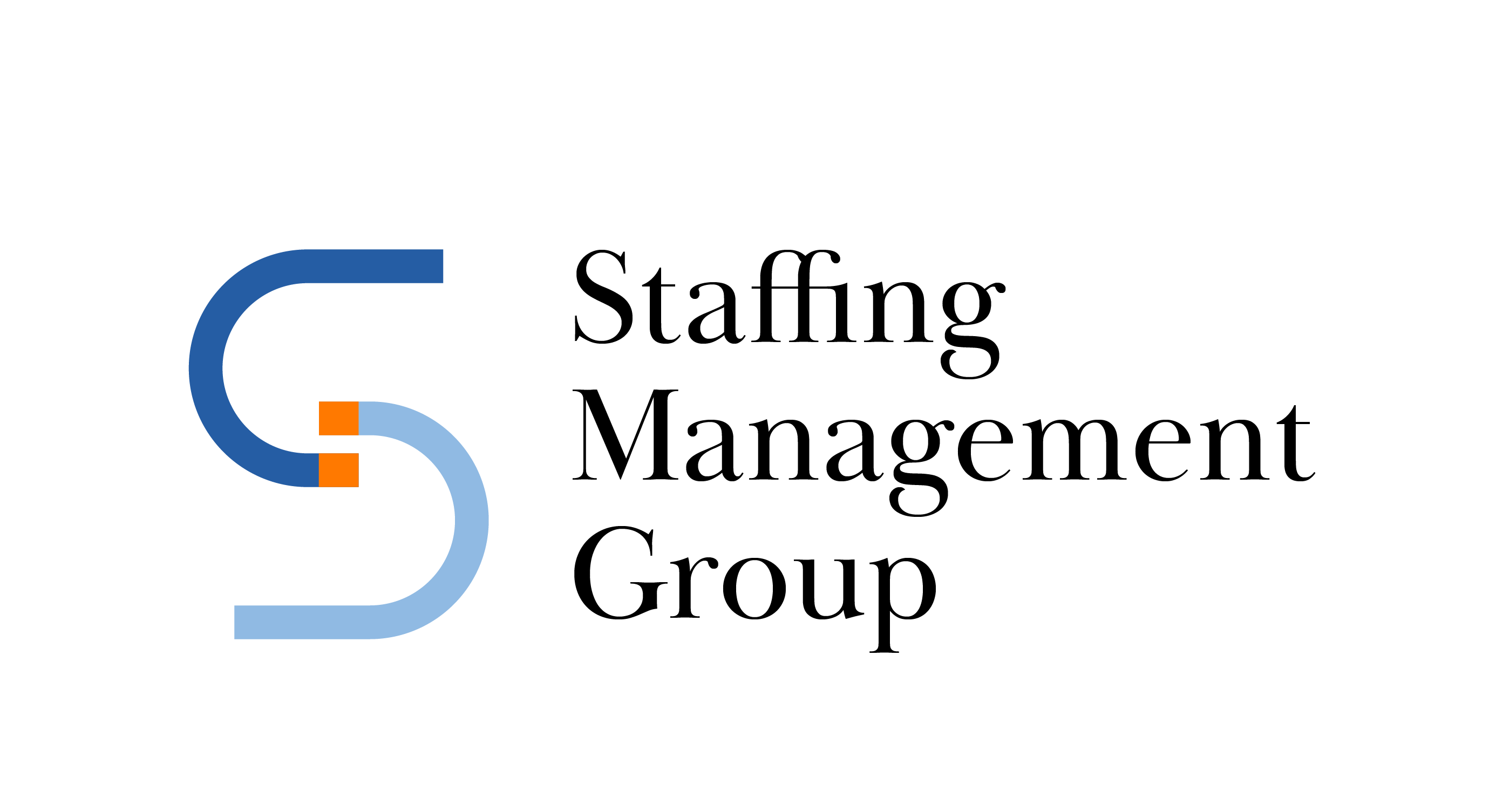Employer-of-Record 2.0: Staying Compliant Across State Lines
Ever expanded your team across state lines only to discover a tangled mess of employment regulations waiting for you? You’re not alone. Thousands of growing companies are finding out that multi-state compliance isn’t just a headache—it’s a potential company killer.
The old employer-of-record models just aren’t cutting it anymore. While they handle the basics, they’re leaving businesses exposed to costly compliance gaps when operating across state boundaries.
What if you could expand your workforce anywhere without worrying about the legal minefield? That’s what Employer-of-Record 2.0 delivers—complete compliance protection that grows with you.
But here’s what most business leaders don’t realize about their current compliance strategy until it’s too late…
Understanding Employer-of-Record (EOR) Evolution

A. Traditional EOR vs. EOR 2.0: Key Differences
Remember when outsourcing payroll was considered innovative? Those days are long gone. Traditional EOR services handled the basics—payroll, benefits, and compliance paperwork. But they weren’t built for today’s distributed workforce reality.
EOR 2.0 represents a complete overhaul of the outdated model. The differences are stark:
| Traditional EOR | EOR 2.0 |
|---|---|
| Manual compliance monitoring | Real-time compliance updates |
| Static documentation | Dynamic policy management |
| Limited geographic coverage | Seamless multi-state operations |
| Basic payroll processing | Sophisticated tax handling across jurisdictions |
| Reactive problem-solving | Proactive compliance alerts |
The old way meant constant anxiety about missing regulatory changes. The new way gives you confidence that your business stays compliant without micromanaging every detail.
B. Why Modern Businesses Need Enhanced EOR Solutions
The workplace has changed dramatically. Your team might include someone in Seattle, another in Miami, and three people scattered across the Midwest. Each location brings its regulatory headaches.
Companies without robust EOR 2.0 solutions face real risks:
- Unexpected tax liabilities from improper state filings
- Noncompliance penalties that could have been avoided
- Talent limitations when you can’t confidently hire across state lines
- Wasted internal resources on manual compliance tracking
What’s driving adoption? Flexibility. Businesses need to move quickly, hire the best talent regardless of location, and scale operations without building compliance expertise in every jurisdiction.
C. Technology Driving the EOR 2.0 Revolution
Behind every great EOR 2.0 platform is sophisticated technology that would make traditional HR departments jealous.
The game-changers include:
- AI-powered regulatory monitoring that catches compliance issues before they become problems
- Cloud-based dashboards give real-time visibility across your distributed workforce
- Automated tax calculations that handle the complexity of multiple state and local jurisdictions
- Integration capabilities that connect with your existing HR systems
The technology doesn’t just make compliance possible—it makes it painless. Instead of maintaining a patchwork of state-specific policies, modern platforms centralize everything while still respecting jurisdictional differences.
Innovative companies are leveraging these tools to expand their talent pools without increasing their legal headaches. The best part? This technology continues evolving faster than regulations themselves, meaning you stay ahead of compliance curves rather than chasing them.
Multi-State Employment Challenges

A. Varying Tax Requirements Across States
Managing taxes for employees in multiple states isn’t just a headache—it’s a full-blown migraine. Each state has its recipe for tax withholding, filing deadlines, and unemployment taxes.
Take California and Texas, for example. California imposes state income tax, disability insurance, and training taxes, while Texas skips state income tax entirely but compensates in other areas.
And don’t get me started on local taxes. Cities like New York and San Francisco pile on their income taxes—because regular taxes weren’t complicated enough, right?
The real kicker? Miss one filing deadline or miscalculate one tax rate, and you’re looking at penalties that can crush your bottom line.
B. Different Labor Laws and Their Impact
Talk about a patchwork quilt of regulations! Minimum wage alone varies wildly:
| State | Minimum Wage | Paid Sick Leave | Family Leave |
|---|---|---|---|
| California | $15.50 | Required | Extensive |
| Florida | $12.00 | Not required | Limited |
| Colorado | $13.65 | Required | Moderate |
Some states require meal breaks after 5 hours of work, while others do not require meal breaks if your team works straight through lunch.
Overtime rules? Different everywhere. Predictive scheduling? Only in some states. And don’t even get me started on termination requirements—what’s perfectly legal in Georgia could land you in court in Massachusetts.
C. Benefits Administration Complexities
Running multi-state benefits is like juggling flaming torches while riding a unicycle.
Health insurance networks rarely cooperate across state lines, forcing you to maintain multiple plans. And those state-mandated disability programs? New York, California, Rhode Island, New Jersey, Hawaii, and Washington each have their requirements.
Even standard PTO policies become nightmares when some states treat unused vacation as wages due upon termination, while others let you implement “use it or lose it” policies.
The worst part? One-size-fits-all benefits packages don’t work anymore. Your California employees might get mandated paid family leave, while your Texas workers wonder why they’re left out.
D. Workers’ Compensation Variations
Workers’ comp might be the ultimate state-by-state headache. Every state runs its program with a unique:
- Coverage requirements
- Benefit calculations
- Claims procedures
- Premium determination methods
North Dakota, Ohio, Washington, and Wyoming prohibit private insurance entirely—you must use the state fund. Meanwhile, other states let you choose between state funds, private insurance, or self-insurance.
Classification codes and experience modification factors differ by state, too. An office worker in Idaho might fall under a completely different classification than the same position in Oregon.
E. Unemployment Insurance Considerations
Think unemployment insurance is standardized? Think again.
While the Federal Unemployment Tax Act (FUTA) provides some baseline requirements, each state determines its own tax rates, wage bases, and eligibility requirements. Your tax rate in Minnesota could be 3.5% while an identical business in Wisconsin might pay just 1.2%.
The real trap is determining which state gets the unemployment taxes when employees work remotely or in multiple states. Get it wrong, and you’ll face double taxation or penalties.
Even the claims process varies dramatically. Some states are employee-friendly with generous benefits, while others set up obstacle courses of paperwork before approving a single check.
Key Compliance Areas for Interstate Employers

A. Payroll Tax Registration and Reporting
Managing payroll across multiple states isn’t just complicated—it’s a potential minefield. Each state has its registration requirements, tax rates, and filing deadlines. Miss one, and you’re looking at penalties that add up fast.
First things first: you need to register in every state where you have employees. This means getting unemployment insurance accounts and state tax IDs, even if your business is physically located elsewhere.
What trips up most companies? Thinking they only need to worry about the state where their headquarters sit. Wrong. If your marketing whiz works remotely from Colorado while your company is based in Texas, you need to handle Colorado taxes for that employee.
Tax withholding thresholds vary wildly between states. Some require you to withhold state income tax from day one of employment, while others kick in after certain earning thresholds or workday counts in the state.
And don’t forget about local taxes. Cities like New York, Philadelphia, and San Francisco impose their taxes in addition to state requirements.
B. Wage and Hour Regulations
Talk about a patchwork of rules! Minimum wage rates aren’t just different state-to-state-they can vary city-to-city.
Check this out:
| State | 2023 Minimum Wage | Overtime Rules |
|---|---|---|
| California | $15.50 | OT after 8 hours a day |
| Florida | $11.00 | Federal standards (40hr/week) |
| New York | $15.00 (NYC) | Varies by industry and location |
Overtime calculations get tricky fast. California requires daily overtime after 8 hours, while most states follow federal guidelines of weekly overtime after 40 hours.
Meal and rest break requirements? Also, all over the map. California mandates paid rest breaks and unpaid meal periods. Other states have no requirements beyond federal standards.
The real kicker is when you have traveling employees. If your sales rep spends three days in California, those days are subject to California wage and hour laws, even if your company is based in Texas.
C. Paid Leave Policies
The paid leave landscape has exploded in complexity recently.
Gone are the days when you could have one company-wide policy. Now you need to track a growing patchwork of state and local requirements.
Paid sick leave laws exist in 16 states, plus Washington, D.C., and dozens of cities. Each has different accrual rates, usage limits, and carryover rules.
Paid family leave programs are gaining steam, and I am too. California, New York, New Jersey, Rhode Island, Washington, Connecticut, Oregon, and Colorado have implemented or approved programs requiring employers to provide paid time off for family care.
What makes this particularly thorny? The interaction between different leave types. An employee might simultaneously qualify for federal FMLA protection, state family leave, and local sick time—all with varying requirements tracking.
Remember: you can’t just apply your headquarters state’s rules to all employees. Each worker is entitled to the most generous benefits mandated by their work location.
D. Employee Classification Guidelines
Misclassify workers and you’re asking for trouble. The stakes? Massive back taxes, penalties, and even legal action.
The contractor vs. employee debate gets more complicated across state lines. California’s ABC test makes it significantly harder to classify workers as independent contractors compared to many other states.
What works as a legitimate contractor relationship in Texas might fail the test in Massachusetts or California.
And don’t forget about exempt vs. non-exempt classification. Salary thresholds for overtime exemption vary:
| State | Minimum Salary for Exemption |
|---|---|
| California | $64,480 (2023) |
| New York | $58,500 (NYC) |
| Federal/Most States | $35,568 |
California and New York have much higher thresholds than federal requirements, and they’re adjusted annually.
Remote work has made this classification mess even stickier. If your “exempt” marketing manager in California doesn’t meet the state’s higher salary threshold, they’re entitled to overtime, regardless of what your company policy states.
The bottom line? Classification decisions need to be evaluated on a state-by-state basis for remote teams.
Implementing an Effective EOR 2.0 Strategy

A. Assessing Your Current Compliance Status
Running a multi-state operation without knowing where you stand compliance-wise is like driving blindfolded. Not fun, terribly dangerous.
Start with a thorough audit. Map out where your employees work (not just where your offices are), what benefits you’re providing, and which payroll systems you’re using. Many companies are shocked to discover they have employees working from states they were unaware of!
Create a simple spreadsheet with:
- Employee locations (actual working locations, not mailing addresses)
- State-specific employment laws apply to each worker
- Current tax withholding status
- Benefits compliance status
Don’t guess. The penalties for noncompliance aren’t worth it. One client of ours faced a $42,000 fine for misclassifying just three employees across state lines.
B. Selecting the Right EOR Partner
Not all Employer of Record services are created equal. The EOR 2.0 approach requires partners who go beyond basic payroll processing.
Look for these non-negotiables:
- Real-time compliance updates across all 50 states
- State-specific employment law expertise
- Integration capabilities with your existing HR tech
- Transparent pricing (watch out for those hidden fees!)
- Proven track record with multi-state employers
The best partners don’t just handle paperwork—they actively alert you to compliance changes before they become problems. Ask potential EORs: “How did you handle the recent paid leave law changes in Colorado?” Their answer will tell you everything.
C. Technology Integration for Seamless Compliance
The days of manual compliance tracking are over. Your EOR solution should talk directly to your existing systems.
What good integration looks like:
- Single sign-on between your HRIS and EOR platform
- Automated tax calculations based on actual work locations
- Real-time reporting for compliance status across states
- Mobile accessibility for managers and employees
- Document management that meets state-specific requirements
One manufacturing client reduced compliance management time by 78% after implementing integrated EOR technology. The system flags potential issues before they become expensive problems.
D. Employee Onboarding Across State Lines
The employee experience matters just as much as backend compliance. A clunky onboarding process screams, “We don’t have our act together.”
For smooth cross-state onboarding:
- Create state-specific welcome packages with relevant local information
- Use digital signature tools that comply with each state’s requirements
- Schedule virtual orientation sessions in time zones that work for everyone
- Provide clear explanations of how benefits work in their location
- Assign a dedicated point person for state-specific questions. Innovative companies create location-based onboarding workflows that automatically provide the proper documents, tax forms, and policy acknowledgments based on where the employee works, not where headquarters happens to be.
Future-Proofing Your Multi-State Workforce

A. Staying Ahead of Legislative Changes
Managing compliance across multiple states isn’t a set-it-and-forget-it deal. The compliance landscape shifts constantly, with state legislatures pumping out new employment laws faster than most HR teams can track them. Innovative companies are plugging into specialized legal news feeds and setting up automated alerts for regulatory changes in every state where they have workers. Some are partnering with legal firms that offer “legislative watch” services specifically for multi-state employers.
The real winners? Companies that build relationships with employment attorneys in each state where they operate. These local experts catch nuances that national services might miss.
B. Building Scalable Compliance Systems
Your compliance infrastructure needs to grow as smoothly as your business. Manual tracking falls apart once you hit about 5-7 states.
Cloud-based compliance management systems are game-changers here. They allow you to:
- Tag employees by location
- Apply state-specific rules automatically
- Generate location-appropriate paperwork
- Track deadlines by jurisdiction
The trick is choosing systems with built-in flexibility. Your tech stack should adapt to new regulations without major overhauls every time a state changes its paid leave laws.
C. Remote Work Policy Development
Your remote work policy needs state-specific sections that address:
- Work hour tracking requirements
- Equipment reimbursement rules
- Home office safety guidelines
- State-specific leave policies
The companies nailing this approach create policy templates with modular sections that can be swapped in and out based on employee location.
And here’s what’s often missed: clear guidelines on employee relocation. When someone wants to move to a new state, what’s your process? Without one, you’ll face compliance emergencies with every employee move.
D. Regular Compliance Audits and Updates
Quarterly compliance check-ups beat annual fire drills every time. Break these reviews into digestible chunks:
- Tax withholding verification
- Benefits compliance review
- Wage and hour policy checks
- Leave policy updates
Document everything. When agencies come knocking (and they will), your audit trail becomes your best defense.
The most effective approach? Rotating focus areas. One quarter might deep-dive into wage compliance while the next examines benefits administration.
E. Employee Training on State-Specific Requirements
Your employees need to understand how their location affects their work experience. This goes beyond a mention during onboarding.
Create state-specific training modules covering:
- Local harassment prevention requirements
- Time tracking expectations
- Specific rights under state law
- Local reporting procedures
The training itself must comply with state laws, too – California and New York have specific requirements for harassment prevention training that differ dramatically from other states. Innovative companies are creating “location change” training packages for relocating employees, ensuring they understand how their rights and responsibilities shift in their new state.

The evolution from traditional Employer-of-Record services to EOR 2.0 represents a significant advancement for businesses managing workforces across state lines. As we’ve explored, navigating multi-state employment presents complex challenges in taxation, payroll regulations, benefits administration, and workplace policies. Organizations that implement effective EOR 2.0 strategies gain the competitive advantage of compliance certainty while maintaining operational flexibility in today’s distributed work environment.
Taking proactive steps toward compliance isn’t just about avoiding penalties—it’s about building a sustainable foundation for business growth. By partnering with advanced EOR providers that offer specialized interstate compliance knowledge and technology-driven solutions, companies can confidently expand their talent pools beyond geographical boundaries. The future of work demands this adaptability, and the organizations that embrace comprehensive multi-state compliance solutions today will be best positioned to thrive tomorrow.
Thank you for exploring Staffing Management Group’s insights! To discover how our comprehensive Payroll Funding solutions support staffing firms or to explore partnership opportunities through our nationwide Partners Program, visit our dedicated pages. Learn more about our flexible Workforce Solutions designed for streamlined compliance and onboarding, or see how our Employer-of-Record 2.0 model redefines staffing operations directly from our home page.
